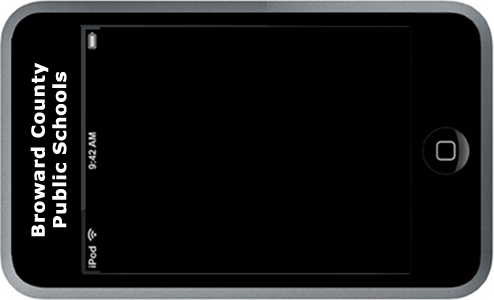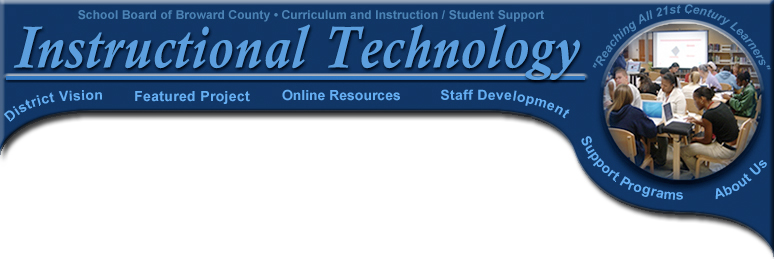
Lesson Objectives:
Lesson objectives: Students will prepare a public service announcement that addresses the reduction of negative, human impact on Florida’s waterways..
Technology used:
internet, text edit, iphoto, imovie
Step by step
lesson overview:
SC.G.2.2.3 SC.G.2.2.1 SS.D.1.2.1 LA.B.2.2.1
How does this help students master the objectives?
A brief statement on how using technology this way will help your students master the objectives better than traditional methods’. : Using technology with problem-based learning (PBL) allows students the opportunity to learn critical thinking, decision making skills, and oral communication skills as well as team building. Students were motivated to learn while developing 21st century technology skills. Students were able to obtain a deeper understanding of the content. It is believed that when taking ownership over their own learning, they will retain the knowledge gained.
Lesson objectives: Students will prepare a public service announcement that addresses the reduction of negative, human impact on Florida’s waterways..
Technology used:
internet, text edit, iphoto, imovie
Step by step
lesson overview:
- Planning Phase:
Students will be assigned to work in groups of four. Using the 4-Quadrant model, students will do their brainstorming Q1:List the ways that humans negatively impact Florida’s waterways. Q2:Write a working definition of what you believe “negative impact” to mean. In Q1: circle the 3 ways you believe to be most harmful. Q3:Develop driving questions to research that will help determine negative impac. Q4:Form a group hypothesis of which human action (from Q1) has the most negative impact on FL waterways. (Prior to brainstorming, a guest speaker from the South Broward Water Management District visited the classroom.) - Gather Phase:
Students will receive instruction on how to take digital notes, using text edit.
Students will assign roles and responsibilities in their groups to research the driving questions that were generated.
Using BEEP access to online encyclopedias and teacher websites, students will research their questions and post their notes on a text edit document.
Students will also learn how to import pictures to iphoto. These pictures will later be used in student created imovies. - Build Phase
After the research and photos have been gathered, students will work collaboratively to create a storyboard for their group. The storyboard will consist of a sketch of their iphoto graphic as well as the script that will accompany the graphic.
The group will assign speaking parts to accompany the script.
Pictures from the iphoto library will be selected and imported to imovie.
Using an external microphone, students will then record their scripts for each iphoto slide. - Share
Students will present their projects.
SC.G.2.2.3 SC.G.2.2.1 SS.D.1.2.1 LA.B.2.2.1
How does this help students master the objectives?
A brief statement on how using technology this way will help your students master the objectives better than traditional methods’. : Using technology with problem-based learning (PBL) allows students the opportunity to learn critical thinking, decision making skills, and oral communication skills as well as team building. Students were motivated to learn while developing 21st century technology skills. Students were able to obtain a deeper understanding of the content. It is believed that when taking ownership over their own learning, they will retain the knowledge gained.
